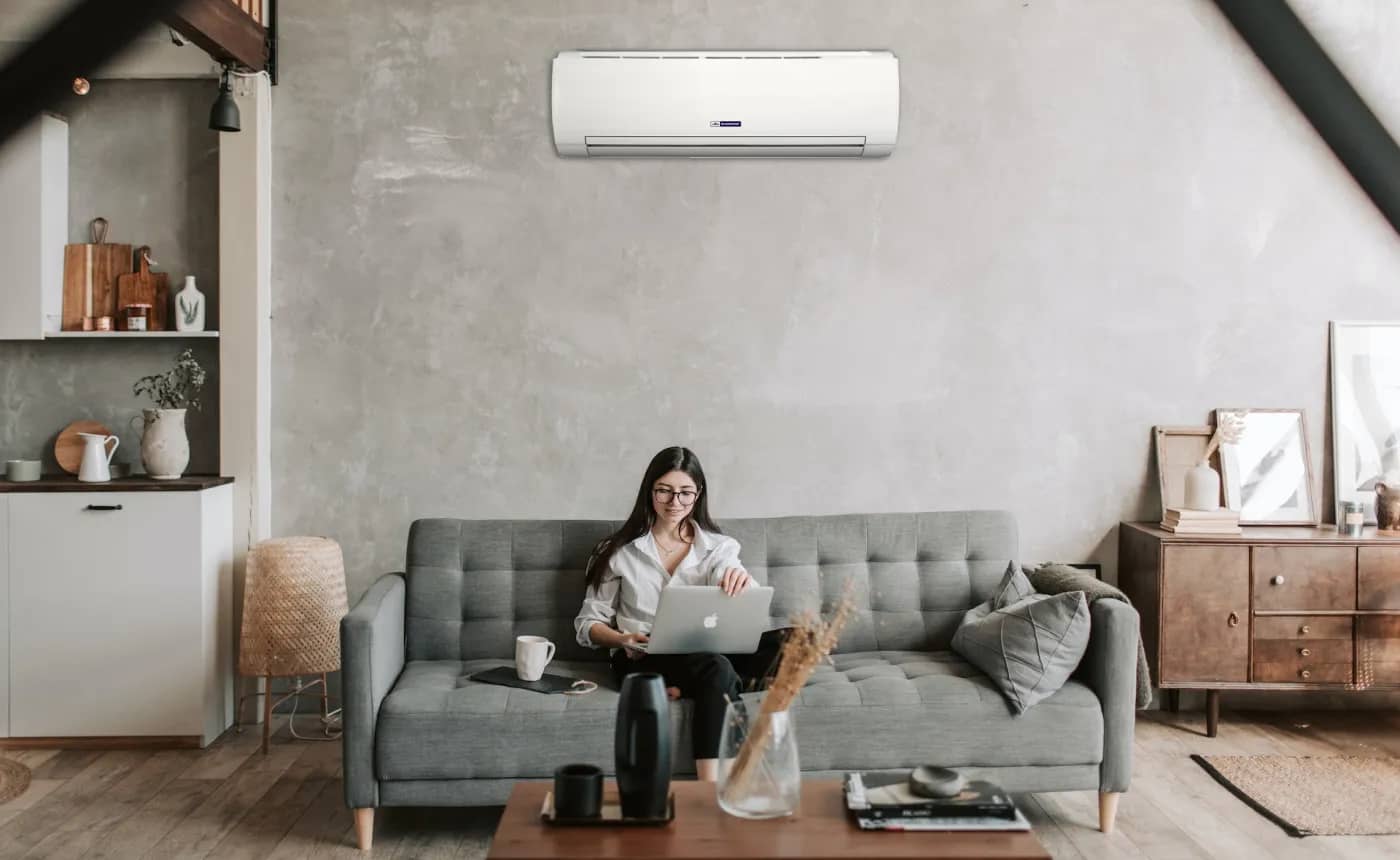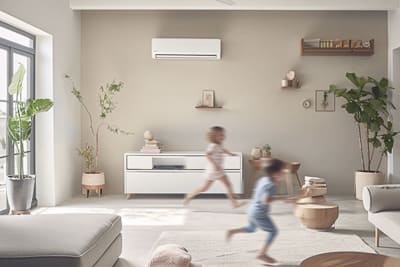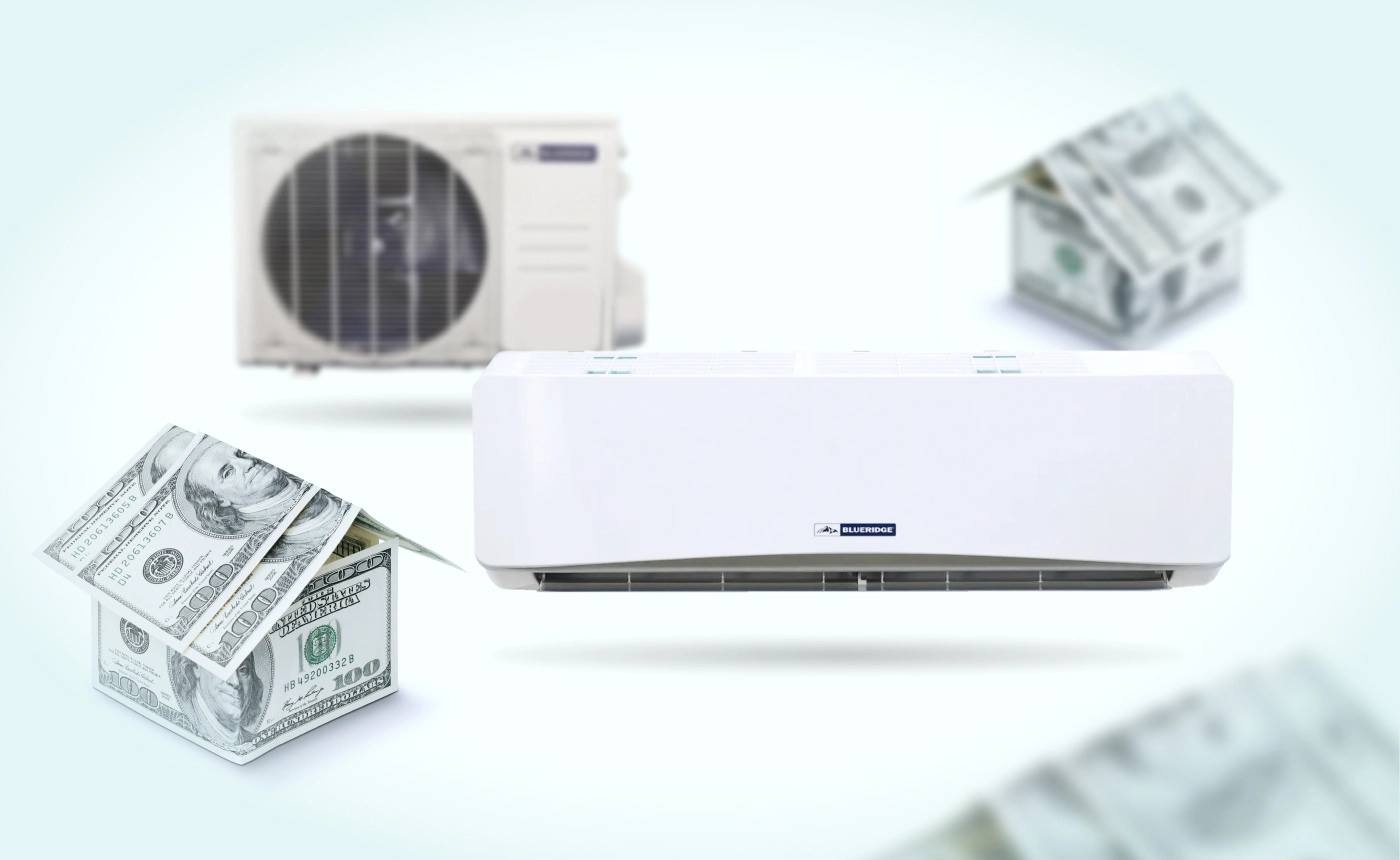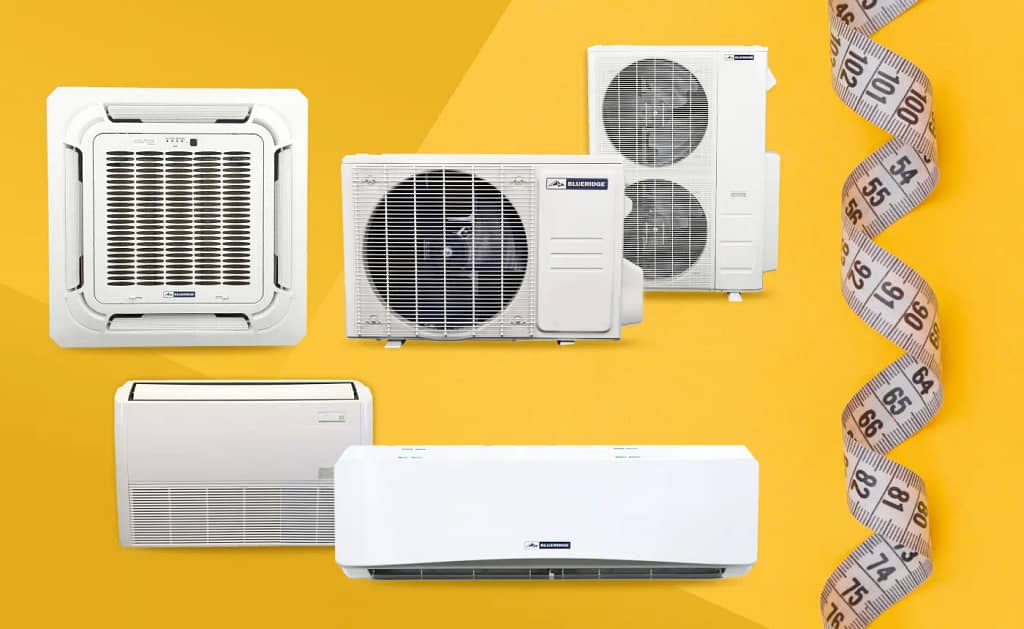
In terms of home comfort, one size certainly does not fit all, especially when it comes to mini-split heating and cooling systems. These ingenious heating and cooling solutions have gained immense popularity for their efficiency and flexibility. But when considering the right system for your space, don’t overlook the crucial aspect of mini-split sizing.
KEY TAKEAWAYS
- The proper sizing of a mini-split is crucial for both comfort and energy efficiency.
- Knowing the factors influencing mini-split size will help you decide what capacity you need.
- Choosing the right-sized unit saves money over time by reducing operational costs and extending the system’s lifespan.
Unlike traditional HVAC systems, where a standard unit may suffice for most homes, mini-split systems require a more tailored approach.
Factors such as how many square feet you have to heat or cool, the level of insulation in your space, the local climate, and even the ceiling height, number of windows, and layout of your rooms all play a crucial role in determining the right mini-split size.
Understanding this will ensure that your mini-split system operates efficiently and delivers optimal comfort while minimizing energy consumption and costs.
Factors That Affect Mini-Split Sizing
Mini-split sizing isn’t a one-size-fits-all endeavor. It’s a delicate balance between providing sufficient capacity to keep you comfortable and preventing oversizing, leading to short cycling, reduced efficiency, and a higher upfront cost.
When determining the ideal size for your mini-split system, several important (and interesting!) factors come into play.
- Room Size and Layout: The square footage of your room is a fundamental starting point for figuring out what size mini split you need. Larger rooms generally require more powerful units, but it’s about more than just size; room layout matters too. Open-concept spaces may need a multi-zone system with multiple indoor units to ensure even comfort distribution.
- Insulation Quality: The insulation within your walls, ceilings, and floors plays a significant role in heat retention or loss. Structures with premium-quality insulation are more energy-efficient and may require smaller mini-splits. Conversely, poorly insulated areas demand larger units to compensate for heat transfer.
- Local Climate: The climate in your region influences the heating and cooling capacity needed. For example, a mini split in a cold, northern climate should have sufficient heating capacity to keep you warm during freezing winters. By contrast, cooling capacity is the priority in a hot, southern region.
- Windows: The number, size, and direction of windows in your space affect heat gain and loss. South-facing windows receive more sunlight, potentially increasing the cooling load, while north-facing windows may require extra heating capacity.
- Ceiling Height: Rooms with high ceilings, such as cathedral or vaulted ceilings, have greater air volume, necessitating higher capacity mini splits to circulate and condition the air effectively.
- Exterior Doors: The number of exterior doors, their insulation quality, and how often they’re used can impact the load on your mini-split system.
- Internal Heat Sources: Consider factors like occupancy levels, electronic devices, appliances, and lighting. Spaces with a high number of heat-producing elements require more cooling capacity.
A Professional Load Calculation: What It Is and Why You Need It
In the context of mini-split systems, a load calculation is a comprehensive assessment performed by HVAC professionals to determine your space’s heating and cooling requirements.
This calculation considers numerous factors, including room size, insulation quality, local climate, the number of windows and doors, ceiling height, and internal heat sources like appliances and lighting.
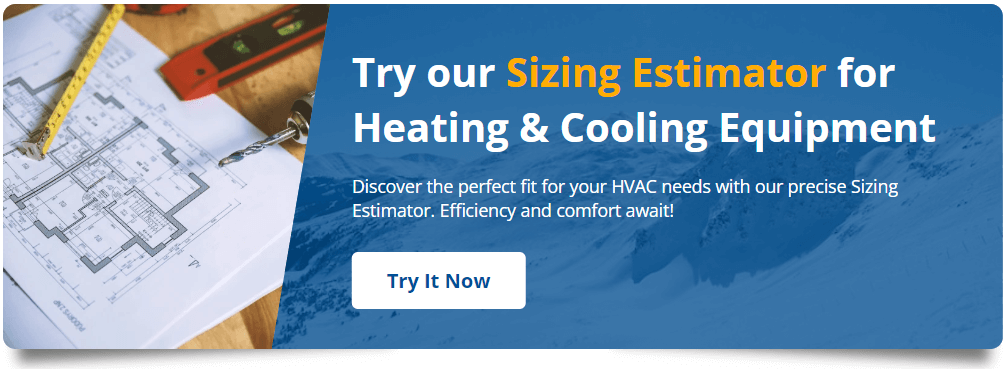
How Is a Load Calculation Determined?
A professional load calculation is determined through a comprehensive assessment of various factors influencing your space’s heating and cooling needs.
Here’s a breakdown of all the elements in a typical assessment:
Room Size
The square footage of the space that needs heating and cooling is a principal factor. The larger the area, the more capacity the mini-split system requires.
Insulation
The quality and level of insulation in your walls, roof, and floors play a significant role. Well-insulated spaces require less heating or cooling, while poorly insulated areas demand more.
Climate
Your geographical location and local climate conditions are essential. Areas with harsh winters or scorching summers will need more powerful systems.
Windows
The number, size, and direction of windows impact heat gain and loss. South-facing windows, for example, may require more cooling during summer.
Ceiling Height
Taller ceilings mean more cubic footage to heat or cool, which affects the load calculation.
Exterior Doors
The number and type of exterior doors are considered since they can be sources of heat loss or gain.
Internal Heat Sources
Appliances, electronics, lighting, and the number of occupants in the space generate heat. These internal heat sources are factored into the calculation.
Orientation
The direction your space faces (north, south, east, or west) can influence how much sunlight it receives, affecting the load.
Humidity Levels
Regions with high humidity may require additional cooling capacity to maintain comfort.
Altitude
Adjustments might be needed for places at higher altitudes due to variations in air pressure and temperature.
Who Can Perform a Load Calculation?
A skilled HVAC professional will provide the most accurate load calculation.

HVAC experts know how to use specialized software and industry standards to precisely determine the required heating and cooling capacity measured in BTU (British Thermal Units) or tons.
This calculation ensures that the mini split system you install is neither too small (which would struggle to maintain comfort) nor too large (which would waste energy and money).
A professional load calculation is the cornerstone of a well-designed and efficient mini-split system tailored to your unique space and needs. It ensures you get the right-sized system for optimal comfort and energy efficiency.
Cautions About Undersizing Your Mini-Split Unit: Risks and Consequences
Undersizing a mini-split system, while often tempting due to its lower upfront cost, can lead to many problems and discomfort in the long run.
It’s essential to understand the risks and drawbacks associated with this common mistake:
- Inadequate Heating and Cooling: The most immediate consequence of an undersized system is that it won’t be able to heat or cool your space adequately. You’ll likely experience discomfort during extreme weather conditions, with rooms remaining too hot in summer or too cold in winter.
- Inefficient Operation: An undersized mini split will continuously run at maximum capacity to try and meet the heating or cooling demand. This leads to excessive energy consumption, higher utility bills, and increased wear and tear on the system. It operates in a perpetual state of overwork, reducing its lifespan.
- Temperature Variations: Undersizing results in uneven temperatures throughout your space. Rooms farthest from the indoor unit may not receive sufficient conditioned air, leading to hot and cold spots.
- Short Cycling: The system may frequently cycle on and off, a phenomenon known as short cycling. This consumes more energy and strains the compressor and other components, potentially causing premature failures.
- Reduced Comfort: Undersized mini-splits often struggle to maintain a consistent and comfortable indoor environment. Occupants may experience drafts, humidity imbalances, and temperature fluctuations that disrupt comfort and well-being.
- Increased Maintenance and Repairs: Overworking an undersized mini split means more frequent breakdowns and maintenance requirements. This can add to significant expenses over time, offsetting initial cost savings.
- Limited Longevity: Undersized units tend to have shorter lifespans due to constant strain. You may need to replace the system sooner than expected, incurring additional costs.
Cautions About Oversizing Your Mini-Split Unit: Risks and Consequences
Oversizing a mini-split system, although counterintuitive, can be a common mistake with significant consequences.
While homeowners may think a larger unit will provide better comfort, it often leads to inefficiency and discomfort. Here’s why oversizing can be problematic:
- Frequent Short Cycling: An oversized mini split system has more cooling or heating capacity than is necessary for the space it serves. As a result, it tends to cool or heat the area rapidly and then cycle off quickly. This frequent on-off cycling, known as short cycling, is highly inefficient. The system doesn’t operate long enough to reach optimal efficiency, which can significantly increase energy consumption.
- Inefficient Dehumidification: Mini splits are crucial in dehumidifying indoor spaces, especially in hot and humid climates. Oversized units may not run long enough to dehumidify the air effectively. As a result, indoor humidity problems could arise, making the space feel clammy and uncomfortable.
- Temperature Swings: Rapid cycling can cause temperature swings, with the space becoming too warm or cold in short bursts. This constant fluctuation in temperature can be uncomfortable for occupants and disrupt the desired comfort level.
- Increased Wear and Tear: Frequent cycling places unnecessary stress on the mini split’s components, especially the compressor. The wear and tear from constant starts and stops can lead to premature equipment failure and more frequent maintenance requirements.
- Higher Energy Bills: Oversized mini splits consume more energy than necessary due to inefficient cycling. This results in higher energy bills, negating any potential energy savings a correctly sized unit could offer.
- Wasted Investment: Investing in an oversized system means paying for capacity you don’t need. You end up with higher upfront costs for the equipment without reaping the benefits of improved comfort or efficiency.

Do I Need a Professional? When Expert Guidance is Needed
Choosing the right-sized mini-split system is a critical decision that significantly impacts your comfort, energy efficiency, and long-term satisfaction. To reiterate the importance of professional load calculations and finding experienced HVAC professionals for this crucial task:

Accurate Sizing Matters:
Accurate sizing ensures that your mini split system can heat and cool your space while optimizing energy usage. While DIY calculations can be made, professional load calculations consider many factors that impact sizing, providing a precise and tailored solution.

Guidance from HVAC Experts:
HVAC professionals possess the expertise and knowledge to perform load calculations accurately. They understand how room size, insulation, climate, and internal heat sources interact to determine the right system size for your unique needs.

Avoid Costly Mistakes:
Undertaking load calculations or relying on rough estimates can lead to costly mistakes. Oversizing or undersizing a mini-split can result in discomfort, inefficiency, and increased energy bills. An HVAC professional can help you avoid these pitfalls.
When it comes to mini-split sizing, the guidance of HVAC professionals can prove invaluable.
Whether you need a single-zone or multi-zone system, whether you do the installation yourself or have someone do it for you, the expertise of a professional in performing load calculations accurately ensures that you select the right-sized system for your specific needs.
Following the steps outlined above, you can find experienced professionals to help you achieve optimal comfort and energy efficiency in your home or office.
For All Your Sizing Needs, Start With Alpine!
With over 20 years of experience in the HVAC industry, Alpine Home Air is ready to be your go-to choice of online manufacturers and distributors of ductless mini-split heat pump systems, no matter what size mini-split you choose.

Whether you’re looking for a single-zone mini-split to heat and cool a new addition or need a five-zone mini-split for your growing office space, we can set you up with exactly what you need.
And if you’re still not sure? Our expert HVAC professionals can walk you through everything from climate considerations to budgetary constraints to help you determine which mini-split size will work best for you.
Alpine Home Air Products: America’s Heating and Cooling Store Since 2002
